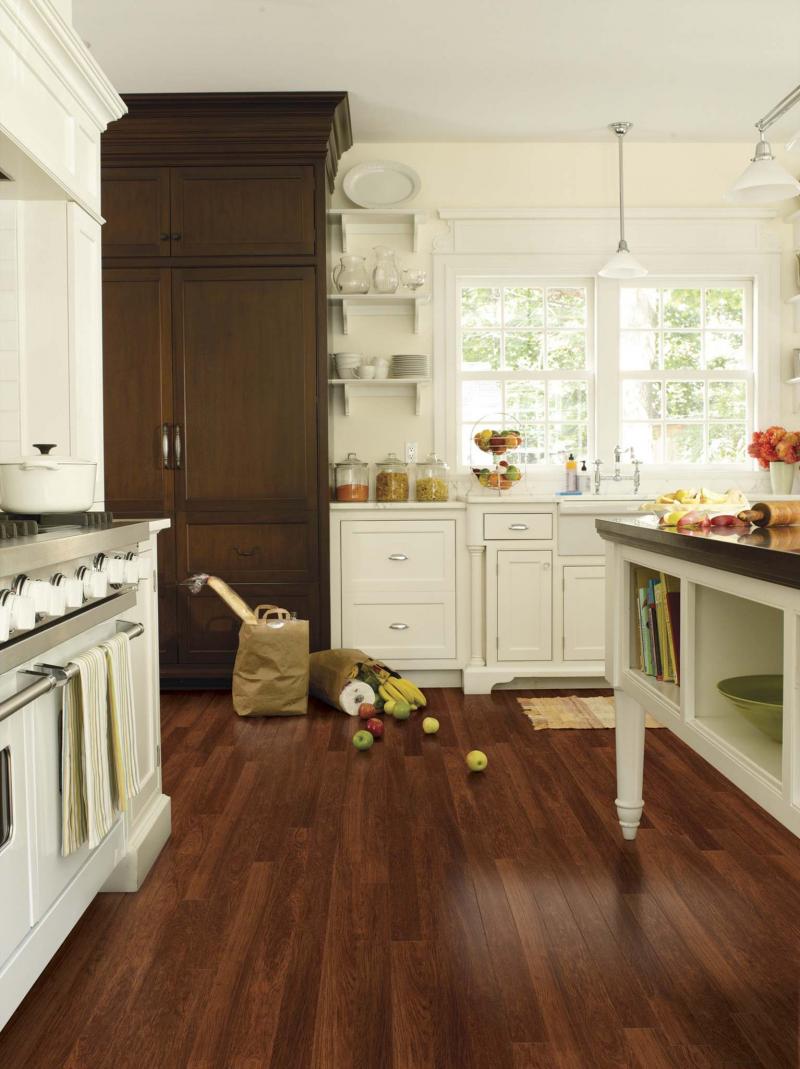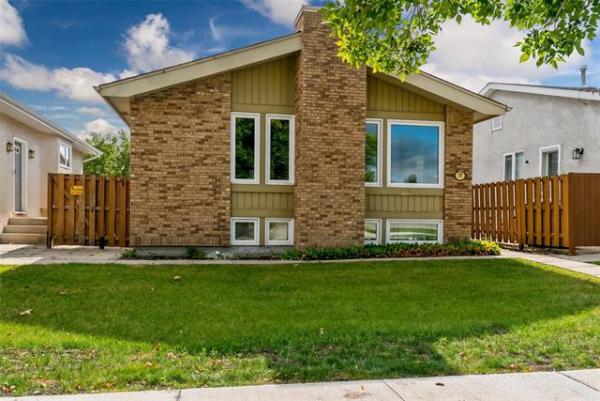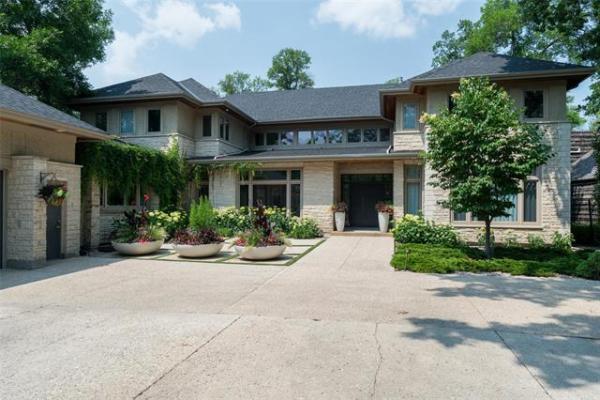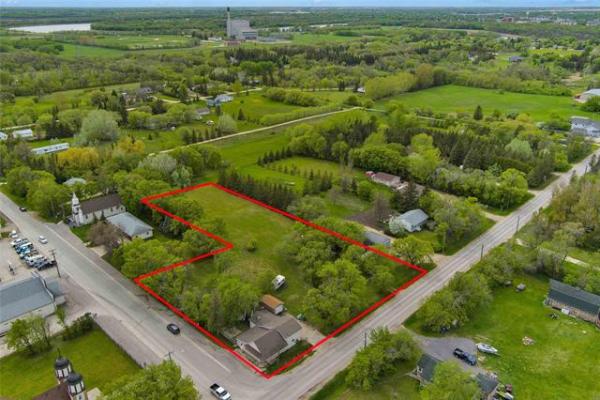
Mannington
Vinyl, wood or cork flooring are better choices for seasonal homes than carpet due to their resistence to moisture.
Question: I read with interest your article on vinyl flooring for seasonal cottages, also on wood floors for the cottage as per your article. We have had a very good quality all-weather carpet with a underlay pad in our seasonal cottage for last eight years. Over the last three years, it has been worsening: there is buckling of the carpet in certain areas. What would be the answer: having it re-stretched or removing the underlay and putting the carpet right on the wooden floor to prevent the buckling? Darlene Karp
Answer: Seasonal buildings can create challenges for many different types of building materials, especially flooring materials. Choosing one that will be better suited than your current carpet will improve the performance and may prevent other issues related to indoor air quality, as well.
Cottages that are used primarily for the warm summer months can have many issues related to the unique environment and weather changes over the seasons. Because you will normally not provide a source of heat to the building in the winter months, various building materials inside the cabin can be affected. Some materials such as real wood panelling or masonry products naturally are less problematic with changes in temperature and humidity. Others, specifically synthetic materials like carpets, vinyl flooring, manufactured wall panelling and cabinets may be more prone to problems.
One reason that various items inside your cottage may shrink or expand over different seasons is the extreme changes in temperature. A major swing from 30 C in the summer to -30 C in the dead of winter can cause significant expansion and contraction of these products. Even if properly installed, buckling or shrinking with the changing temperatures can cause flooring to move. In extreme cases, carpeting can pull away from the self-edge strips holding it in place around the perimeter, seams can let go, or major wrinkles can appear in the middle of the floor. While a re-stretching may be a temporary solution and can last a few years, constant movement will damage the carpet over time.
While this temperature-related movement may be a nuisance or require hiring a carpet layer to re-secure the wrinkled flooring, moisture may be your biggest enemy. Since most cottages are in lake country, the relative humidity may be extremely high at all times of the year. Even in the middle of winter, with temperatures well below freezing, there may be significant amounts of moisture trapped within the air inside the building. Without adequate ventilation, rarely seen in a closed-up cabin, this moisture may cause condensation and frost to develop. Because carpets and under-pads can trap moist air within the fibres, or underneath, mould growth is a strong possibility. It may be this moisture that is also partly responsible for the shrinking and expanding of the carpet fibres, especially since it is not secured in the middle.
Removing the underpad and gluing the carpet directly to the plywood subfloor may help minimize those issues, but the carpet still can be a harbinger of mould spores, dirt, pet hair, and sand. Depending on the type and depth of pile in the carpet, significant amounts of debris can remain there despite frequent vacuuming. This organic material can also be affected by condensation and lead to a smelly, damp floor covering. For that reason, alone, choosing a different type of flooring makes sense. The difficulty is choosing an alternative that will prove durable enough to resist the extreme seasonal changes while providing a clean, attractive surface.
While there are numerous flooring alternatives available, hard-surface flooring should be the best choice. Eliminating sheet-flooring goods that have more chance of expansion and contraction due to their length, may be the place to start. Flooring that is installed in smaller sections may have more flexibility of movement and should be less prone to buckling like your current carpet. Many newer flooring materials, such as vinyl plank flooring, pre-finished hardwoods or laminates, meet this criteria, but care must be taken in making the right choice for the situation.
Traditional laminate flooring may not be suitable for your cottage, despite the ease of application. The core of most of this type of inexpensive flooring material is fibreboard, which is composed of compressed wood fibre. While this material is quite dense and hard, it is not very resistant to moisture. The high humidity environment of lake country, combined with the possibility of winter condensation inside the closed building, makes this a bad choice. Additionally, pre-finished hardwood flooring may also be particularly sensitive to high moisture levels and can often buckle or pull apart due to seasonal changes. Unfinished hardwood or softwood flooring may be a better alternative, but will need to be acclimatized well in advance of application to prevent a similar fate.
Plank-style solid vinyl flooring, cork flooring tiles, or other tongue and groove or click together material may be the best choice for your seasonal home. These have the versatility to be installed easily, often without fasteners or adhesives. They can also be easily transported to a remote location in small packages. But the most significant advantage may be the ability to replace individual sections if they become damaged or adversely affected by the environment without replacing the entire floor covering.
Fixing your current carpeting in your seasonal cottage might be one task that should not be attempted and your efforts and money more wisely channelled to replacement with a better alternative. Hard-surface flooring that is installed in smaller sections, often without adherence to the subfloor, may be the better choice to prevent excessive movement and prevent trapping debris and moisture that can also be detrimental to the indoor air quality.
Ari Marantz is the owner of Trained Eye Home Inspection Ltd. and the past president of the Canadian Association of Home & Property Inspectors — Manitoba (cahpi.mb.ca). Questions can be emailed to the address below. Ari can be reached at 204-291-5358 or check out his website at trainedeye.ca.
trainedeye@iname.com



